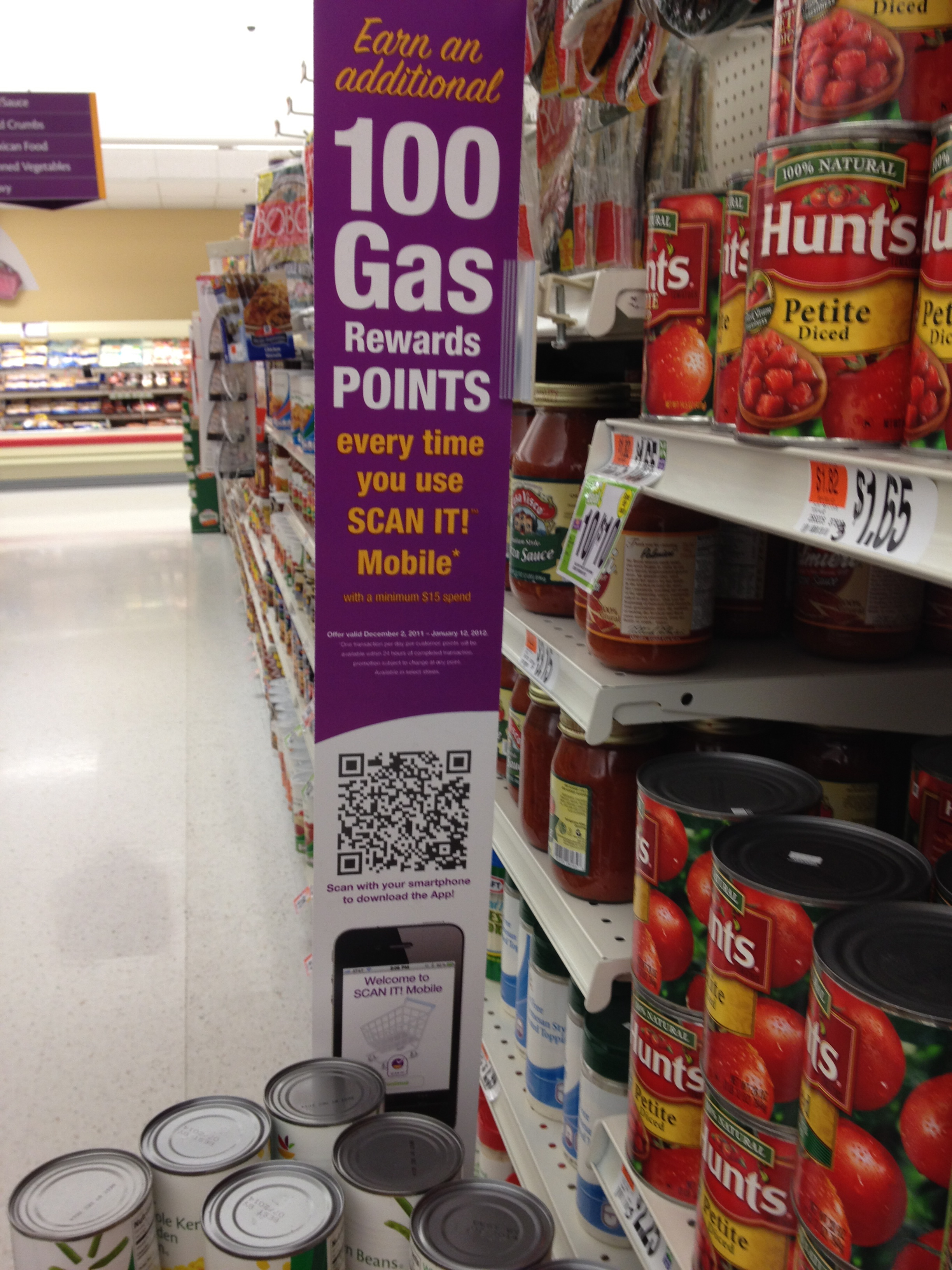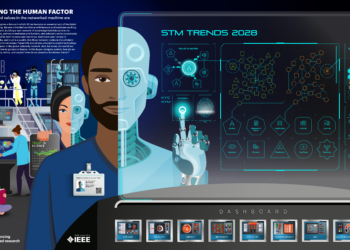
Last December, while visiting London, I visited Waterstones, a favorite bookstore with a number of nice memories. As usual, I found about a dozen books I wanted to buy — books I hadn’t known about before. But I didn’t have a lot of space in my luggage, and I also didn’t want to pay as much as retail prices in British Pounds run, so I did the next best thing. I broke out my iPhone, opened up my Amazon app, and bought either the print or Kindle editions of the books I wanted, or just “shopping cart”ed them.
Apparently, this behavior is becoming more commonplace, with bricks-and-mortar stores serving as stimulus palaces for shoppers, but actual purchasing shifting to cheaper venues — some online, some down the street.
The market research by Prosper Mobile Insights shows some startling data that feel all too true to life:
- 40.6% compared prices and purchased at another physical retailer using their smartphone
- 25.6% compared prices and purchased from another online retailer using their smartphone
- 13.3% compared prices and purchased from the same retailer’s Web site using their smartphone
- 35.8% read product reviews while shopping using their smartphone
- 29.7% scanned a QR code to get more information on a product while shopping
The numbers total more than 100% because people could admit to doing more than one thing over the past few months.
It’s long been predicted that smartphones would serve these purposes, but to see it coming to fruition feels like the difference between predicting a storm and living through a storm — the power of the environmental change is now palpable. Imagine the money flying out of a retailer over 3G each day. Imagine the disconnect between the shopper’s reality and the retailer’s store design. Imagine the opportunity presented for redesigning retail spaces to support these behaviors — QR codes to online review centers, instant price-matching opportunities (even to the company’s own Web site), and so forth.
It was a big change for scholarly publishers when modems, printers, and monitors became normal installed infrastructure for our customers. Suddenly, we could consider not printing some things, begin publishing information more rapidly, and integrating multimedia. Our entire business was transformed.
A new breed of infrastructure is being installed in the purses, on the belts, and in the pockets of our customers — and they’re using it heavily. What might that mean for us?
Whatever’s next, it feels big.
Discussion
14 Thoughts on "Devices and Shopping — New Trends, New Potential, and New Perils for Retailers"
Kent, this follows up a bit on the discussions about Amazon that we’ve had lately. There’s a great convenience in having a set of local stores where you can go browse in person (and like you, I tend to find lots of interesting books every time I step into a physical bookstore). But if we’re just using them as a showroom for a cheaper online vendor, then they won’t continue to exist for very long.
As you’ve pointed out, that’s the evolutionary outcome of an inability to compete with a new invasive species. That’s bad in that it hurts the local economy, lessens the shopping experience for the consumer, and hurts the new online victor in lost sales (with no bookstore, you don’t find those 12 books and never purchase them from Amazon).
I’m not sure QR codes are the answer, as what we’re dealing with here is an economic inability to match prices. It’s unclear if your local bookstore could survive selling at Amazon’s prices even if given the opportunity.
Charlie Stross has written an interesting piece about what “High Street” (the UK term for your local shopping district) will look like in 10 years (many of the comments on the piece are quite good):
http://www.antipope.org/charlie/blog-static/2011/12/high-street-blues.html
Essentially, you’ll see some stores catering to older customers who don’t want to change their shopping habits. You’ll have restaurants and bars, convenience stores (for when you need more beer at halftime) and likely some physical stores for items which you need to see in person to buy (shoes for example, where you’d want to try them on). But you may also start seeing “showcase” sorts of stores. Think of a place like the Apple Store where you can go in, try out the product, then order one and either have it shipped to your home or pick it up later. What we’re likely to see is storefronts with no inventory (and the overhead that requires). You’ll also see lots more vending machines (think RedBox).
Interesting to think about how this would work for bookstores, particularly with things like the Espresso Book Machine. Or the idea of all the local retail shops going away and Amazon opening showrooms in their place.
Since bookstores as outlets for scholarly books long ago ceased to be relevant, given the decline of independents and the buying policies of the chain stores, I don’t think there is much to worry about here for our sector. But trade publishers should be greatly concerned, not least because one main reason they could claim for authors publishing with them is that only by doing so could they gain access to such stores. When these stores disappear, what do trade publishers have left to offer? Already we see some best-selling authors like Amanda Hocking turning to self-publishing instead. By contrast, scholarly publishers still have the prestige of their imprints to offer authors, who depend on that for their own career advancement. Oddly, the practice of P&T in universities is what ensures the viability of scholarly publishers in this age when everything else is being so transformed in rthe business of publishing.
Wasn’t Amanda Hocking the self-published author who then signed a deal with St. Martin’s Press?
https://www.nytimes.com/2011/03/25/books/amanda-hocking-sells-book-series-to-st-martins-press.html?_r=1
Retail stores being used as showrooms seems almost inevitable. I wonder if brick-and-mortar retailers are intentially driving shoppers to their web sites. When was the last time you went to a retail store and were able to find a sales clerk and find one knowledgable about the products being sold? Customer service in the average brick-and-mortar store is almost dead. When I did my Christmas shopping this year (which I have done primarily in retail stores), I found an increasing number of stores offering a wider array of products online than in the store. The online store sometimes had items in stock that were sold out in the physical store. Customers aren’t moving just to Amazon. They are shopping at the online version of their favorite retailers as well, and retailers seem to be driving that change.
So, when regular bookstores become just display spaces for Amazon, won’t this drive up Amazon’s costs, so that when nothing is really sold in these stores anymore and they are all owned by Amazon, it will start charging much more for books since there will be no competition left–unless, of course, as Joe Esposito advises, publishers themselves start selling direct to customers. Ironically, then, publishers would gain from having Amazon pick up the tab for the display outlets and could underprice Amazon!
If I’m running a bookstore, maybe I make it easier for people to buy books: a) that I don’t currently have in stock; b) at prices that match Amazon’s prices; or c) after looking at reviews across more sites than just Amazon. This can work two ways — right now, customers are going out to Amazon to check prices, but why not suck in Amazon’s reviews and prices, and reassure people that you’re matching prices, sharing reviews, and so forth?
Bookstores are now permeable to information, and can’t hide in local shelters, pricing as the community will bear. Stores in general are feeling (or will soon feel) the same pressures. The effect on prices is predictable, and will be inversely proportional to the amount of technology brought into stores by customers. The effect on service should be just as predictable, and I wish it would be directly proportional to the amount of technology brought into stores by customers. That will take longer to happen.
Kent, your analysis is too logical. You write as if shopping is merely a rational choice of service and price. This article from the Washington Post, about a riot at the Apple Store in the Sanlitun district in Beijing, speaks volumes (I think) about the interplay between technology and retail and why internet shopping is merely another choice and not a replacement for retail. Apple is almost a cult in China. It embodies modernity and is an icon of hip among the young. This
story illustrates my point.
I actually bought my iPad at this very store in Sanlitun. The day I went to this store the line to get in was several blocks long and the wait was well over an hour. Everyone in this line was young and had a mobile phone. As the article points out, the crowd could have easily ordered whatever it was they wanted to buy via Apple’s website. But they didn’t. Why? Because retail is more than just buying a good or fulfilling a need. The Apple Store in Sanlitun is hip. You go there to be seen. You go there to interact with other Apple nerds. You go there to touch and play with the product. You go for the experience and the immediacy, in short, an experience you can never get from a website. Shopping on the web is a transaction. Shopping in a store is an experience (or should be). People shop for the act itself, in short, as is the case with this Apple Store, the store itself is a destination. If you are a retailer, the secret for survival in the 21st century is in the lessons to be learned from this story.
I don’t think the products were immediately available online–they’re sold out, much like they were (and still are for several weeks) in the US. The people in line there were being paid to purchase phones that would be re-sold at a profit. Apple may be symbolic to some, but this was a case of people who had been hired to get something in-hand not available elsewhere who were then angered because they couldn’t complete their task and get paid.
Yes, that is true to a point. But lines blocks long that take hours to traverse are not peopled by mules alone. We are talking about hundreds maybe even thousands of people, David. They are not all mules. I have stood in those lines. I have observed the throngs at that store first hand. The Apple store is a destination in Beijing. I have stood in the throngs of people playing with the Apple products. The majority of the people in these lines are not mules.
Perhaps you all would enjoy my stepson’s blog post on pseudo-Apple stores in China: http://www.isidorsfugue.com/2012/01/fake-apple-stores-in-china.html
Your point on the Apple Store is certainly true. And I think that’s the sort of thing Kent has been trying to get at in recent weeks–if you can’t compete on price, what can you do to make a compelling experience for the shopper, are there other areas in which you can out compete the cheaper online alternatives? Contrast how people feel about the Apple Store (which are tourist attractions in Manhattan) with how they feel about Best Buy:
http://www.forbes.com/sites/larrydownes/2012/01/02/why-best-buy-is-going-out-of-business-gradually/
Apple also provides an informative example of a manufacturer that has gone from relying on third party retailers to one that sells directly to consumers.
My point above was simply that today’s incident was a weird one, not one that gives a sense of the regular operations of the Apple Store, with migrant workers hired and bussed in from afar to buy iPhones for resale.
David, though I disagree that the majority of the people in those lines are mules, even if they were, my point still holds. When people go to that store, they spend hours playing with the gadgets. There are even Apple security people to control the large crowds. To be sure, there are people at the counter buying (whatever the hot item at the moment is) but most are playing with the gadgets. Apple makes their store an event. Price and service are only part of the equation in retail. Bricks and mortar retail can provide something a website can never do, they can provide a live experience . Because shopping is more than merely a rational exercise, I believe that the predictions of the demise of Main St are overblown. To be sure, the internet provides a new competitive environment but that still leaves lots of room for bricks and mortar retail.



